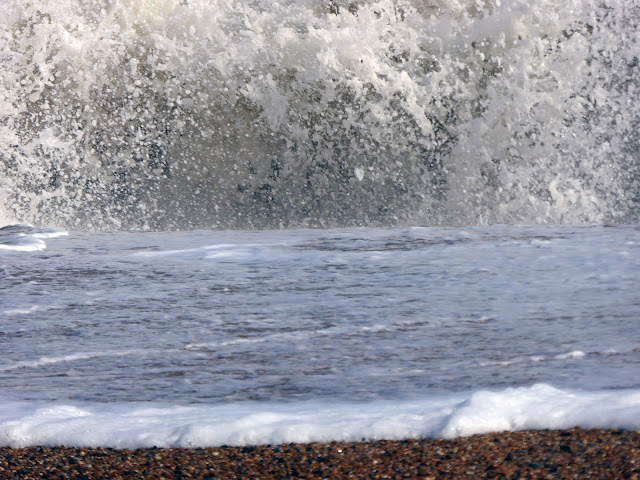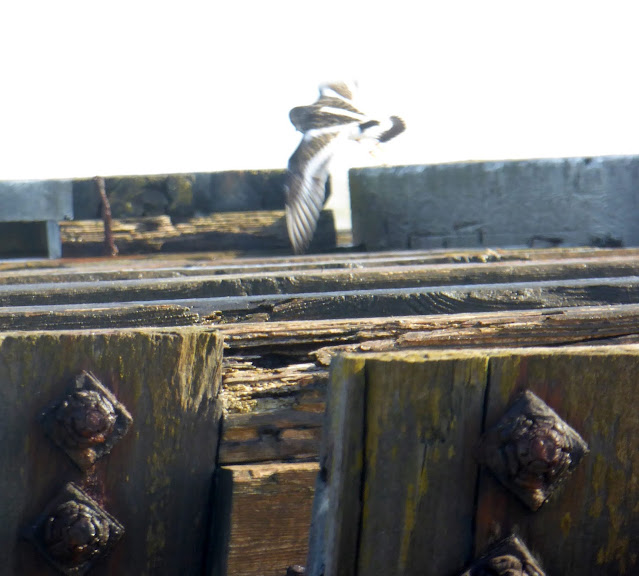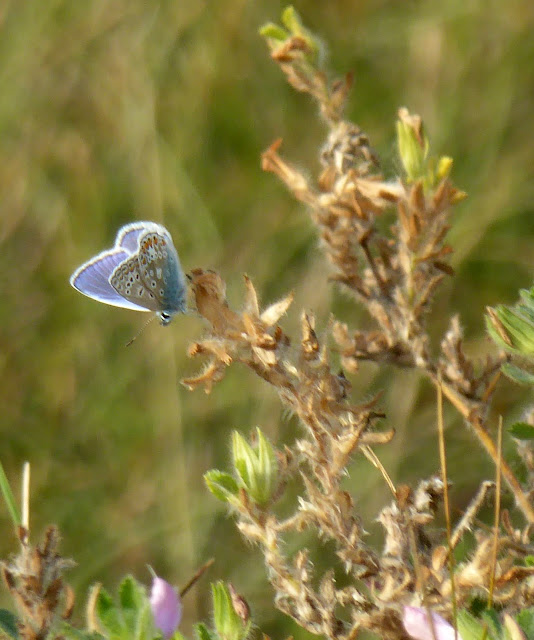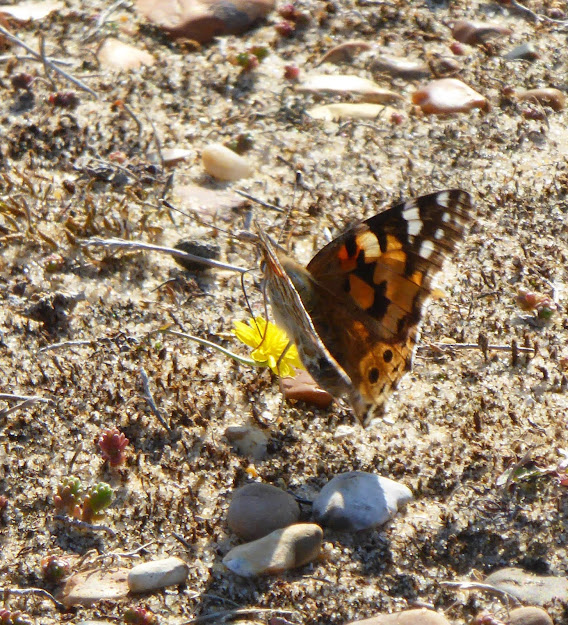I see we are fast moving towards the autumn equinox, and perhaps this had something to do with the force of the waves on Saturday afternoon. I know other places have experienced dreadful storms and floods. The beach at Landguard shelves steeply as you may be able to tell from the photo.
As ever, I enjoyed seeing what was on the sand around my feet. I need to get my pebble book out and gen up on my stones. I spent my teenage years in East Anglia and used to know my carnelian from my quartz!
As you can see, this far end of the beach was once again pretty unpopulated. There were three windsurfers quite a way out, braving the breakers.
We spotted a bird on the groyne, this time clearly a Turnstone.
You can see the wing markings in the photo below. I nearly missed its take-off!
Up on the reserve we managed to find several Common Blue butterflies in the sheltered spots.
Most had hunkered down to avoid the wind.
There were also a couple of tiny Brown Argus.
I think this butterfly had seen better days.
Another Common Blue...
... and another, this time on the Tamarisk.
I wonder how many more we will see this season. For any who may not know it, here's a link to Robert Frost's beautiful 'Blue-Butterfly Day' poem, though as you will see, it doesn't exactly fit with our UK season right now!
































































